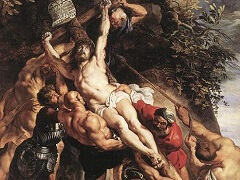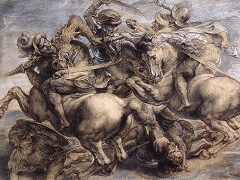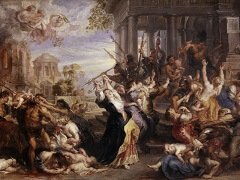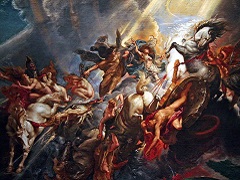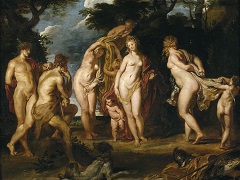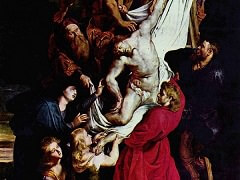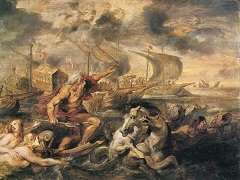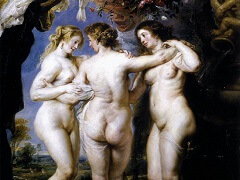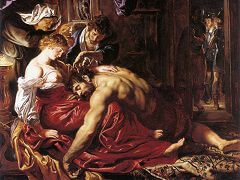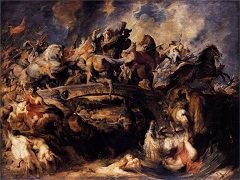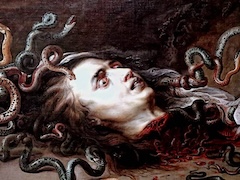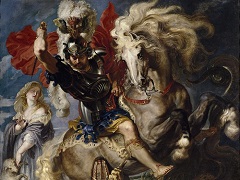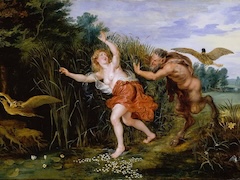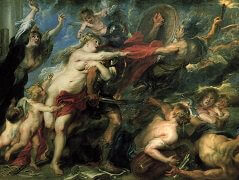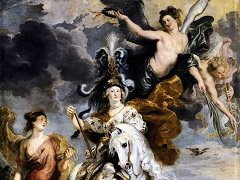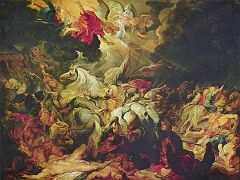Assumption of the Virgin Mary, 1626 by Peter Paul Rubens
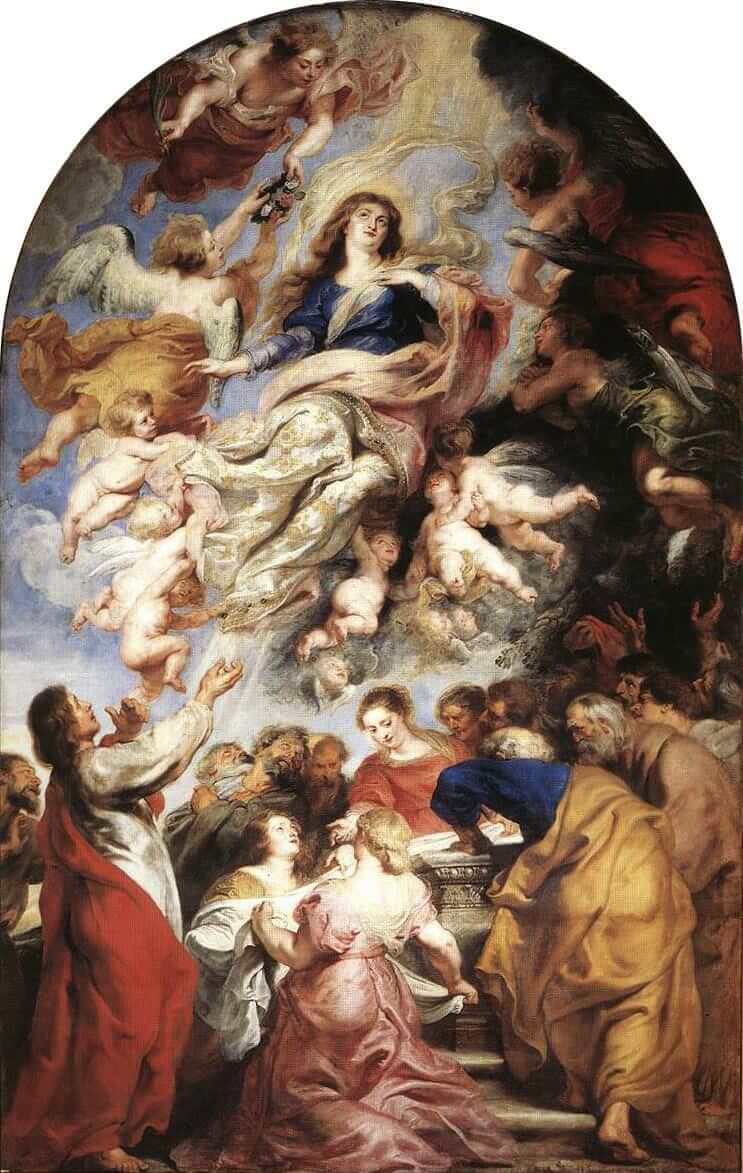
Assumption of the Virgin Mary was created by Rubens in 1626. In the foreground of the picture, (now in the Museum at Brussels) we see the apostles, some of whom are opening Mary's tomb and lifting off the heavy stone that covers it; others are following Our Lady with their eyes with reverential admiration and profound astonishment. Mary is mounting to heaven, surrounded by a troop of angels. At the bottom is the marble tomb, academic in form; in front of it kneel two apostles, one bowed over the tomb and putting his head into it to examine it to the bottom, the other with eyes and arms raised to heaven; a third standing up leans forward to convince himself of the reality of the prodigy. Behind the tomb are two apostles, one of whom is lifting off the stone while the other bends his eyes to heaven. Beside them is a woman, a lso helping to lift off the stone and looking into the aperture. On the left two women on their knees are inspecting with astonishment the flowers and the shroud they have discovered in the tomb. At the top of the picture we see the Virgin ascending into the clouds, with arms extended and eyes turned to heaven; she seems to rise of her own accord rather than by any external force. Around her sport little angels, triumphant and joyful; some bear the train of their queen, others the clouds on which she rests.
It is a very remarkable work, both for its happy composition and its clear interpretation of the subject. On the earth, all is life and movement; the emotions and attitudes of the apostles differ in every case. One and all, they are robust men, who stand out strongly against the pale blue background; their full-toned draperies, arranged in large masses, fall in straight and solid folds. The women are pleasanter in form and painted in more luminous and caressing tones. The further we mount into the upper regions, the more delicate become the forms, the fainter the colours, and the more immaterial the figures and draperies. The angels forming the lowest rank o f the troop which surrounds Mary are still firm in flesh and outline, and the clouds in which they hover are heavy; higher up, the clouds become less dense and the flesh but shadow, and the winged children are transformed into celestial spirits. By her attitude and expression, Mary is detached from the earth and already belongs to a higher world. Celestial glory radiates around her and she ascends in a supernatural light that falls from the summit of the empyrean.

